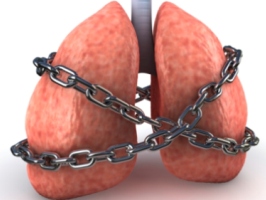 With May being designated Asthma Awareness Month, the EPA is using the occasion to help individuals control their symptoms and to shine the spotlight on several asthma management programs that have proven effective.
With May being designated Asthma Awareness Month, the EPA is using the occasion to help individuals control their symptoms and to shine the spotlight on several asthma management programs that have proven effective.
26 million people in U.S. with asthma
Asthma is a national epidemic, affecting nearly 26 million people, including seven million children and disproportionally affecting low income and minority communities. The EPA says the economic costs of asthma amounts to more than $56 billion per year from direct medical costs and indirect costs, such as missed school and work days.
EPA Acting Administrator Bob Perciasepe said the number of people diagnosed with asthma is increasing every year, despite efforts by the EPA to limit environmental triggers through strengthening the national standard for fine particle pollution (soot) and finalizing the Mercury and Air Toxics Standards (MATS), which the agency estimates will help avoid 130,000 cases of aggravated asthma by 2013.
The agency singled out the following programs which won 2013 National Environmental Leadership Award in Asthma Management awards:
- Greenville Health System (Greenville, S.C.): A multidisciplinary, multilingual, family-centered program that is able to, with partner collaboration, provide medical care, case management, school/daycare visits, and environmental control home visits for over 4,000 children and adolescents with asthma, especially those who have limited access to health care.
- Parkview Health (Fort Wayne, Ind.): The program addresses the growing incidence of asthma-related illnesses in the communities they serve. Support services, resources and age-appropriate educational information on asthma are provided. Those that are a part of the Emergency Department Asthma Call Back Program, including a high number of low-income individuals, are provided home visits to assess and minimize environmental asthma triggers.
- North East Independent School District (San Antonio, Texas): The urban, diversified school district’s Asthma Awareness Education Program targets the more than 8,000 students with asthma and provides direct case management strategies including counseling with families, home visits, coordination with asthma specialists, and asthma education.
Americans who suffer from asthma can learn to control their symptoms and still maintain active lifestyles with these three simple steps:
1. Identify asthma triggers and avoid them. Air pollution, dust mites, secondhand smoke, mold, pests, pet dander can trigger asthma attacks. Identify and avoid personal asthma triggers – different people are affected differently. Work with your doctor to identify and avoid your triggers.
2. Create an asthma action plan. An asthma action plan will enable you to monitor your asthma on a daily basis and communicate important information about your personal asthma triggers and asthma control strategies. Ask your doctor to assist you in creating an asthma action plan.
3. Pay attention to air quality. Exposure to ozone and particle pollution can cause asthma attacks. When air quality is low, people with asthma may want to stay indoors, use air conditioning instead of open windows, and avoid outdoor activity. Check local air quality conditions and download an Air Quality Index app for smart phones.
For more information about asthma and environmental triggers and the 2013 National Environmental Leadership Award winners: http://www.epa.gov/asthma
View the Air Quality Index and download the free mobile app: airnow.gov
Join the conversation by using #asthma in your social media posts and view these videos that feature well-known athletes with asthma: Jerome Bettis youtu.be/xegEGTsndcY, Chris Draft youtu.be/KG1TCHHzalE




